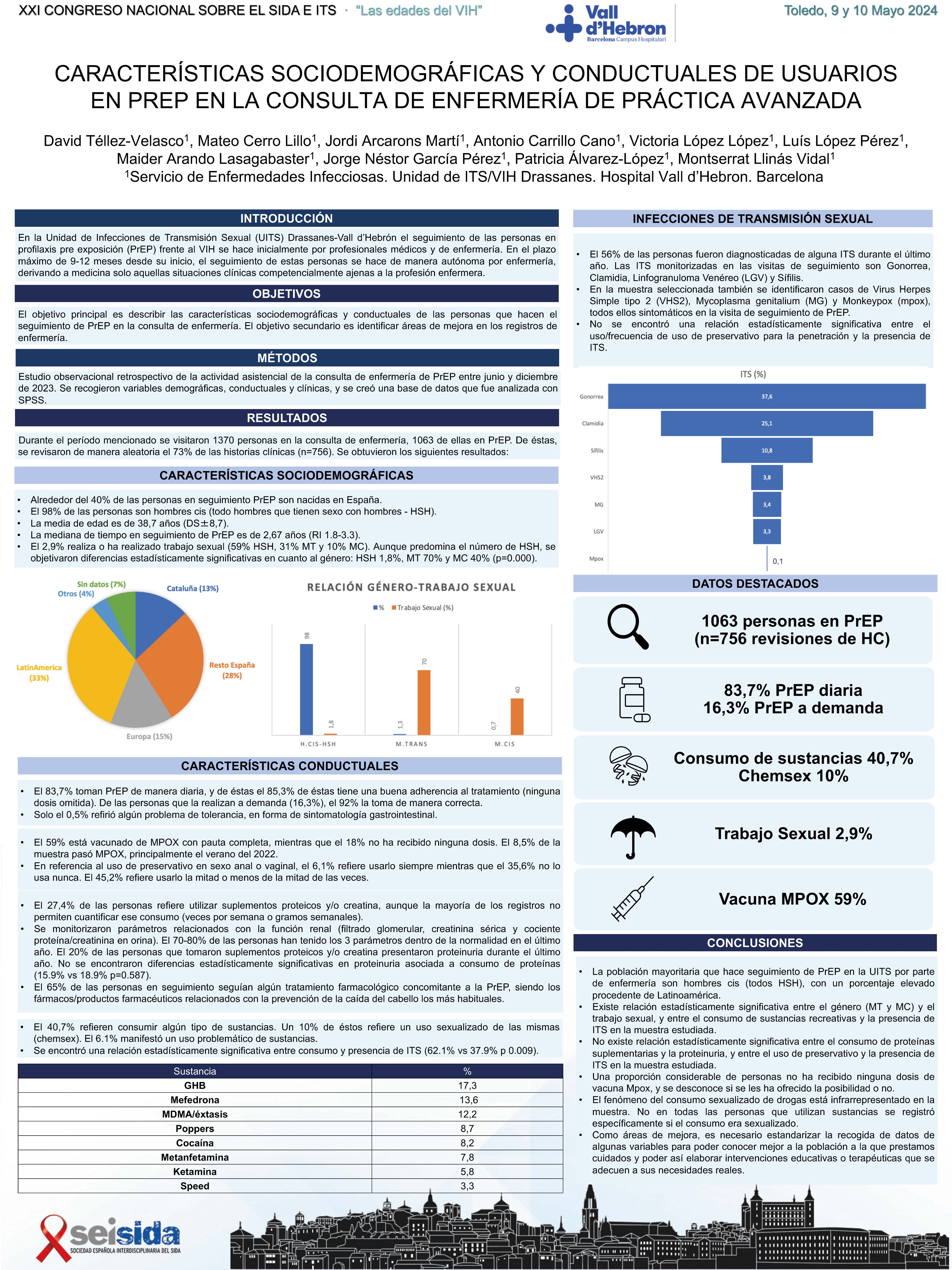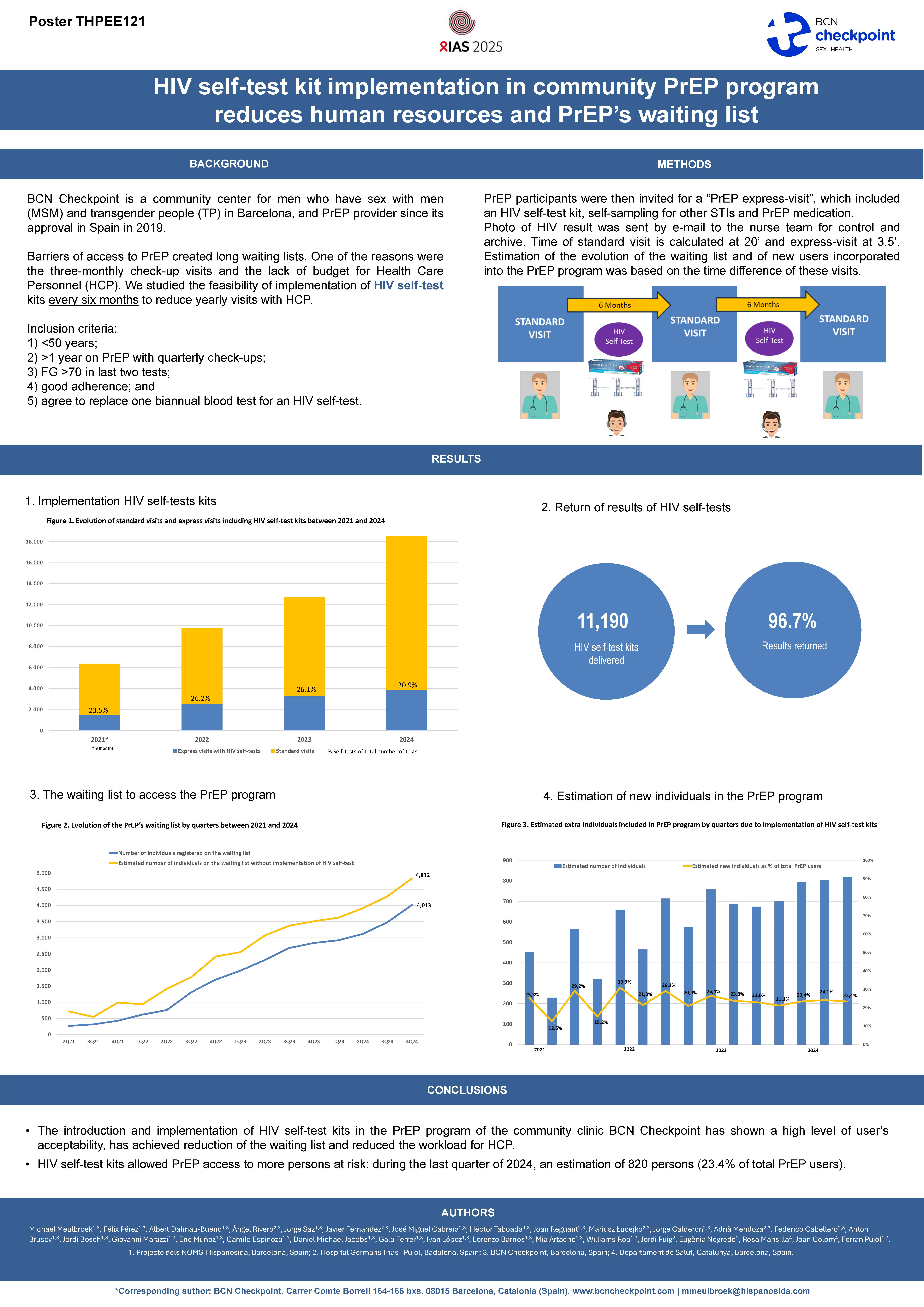Catàleg general VIH

Evolution of risk behaviors, sexually transmitted infections and PrEP care continuum in a hospital- based PrEP program in Barcelona, Spain: a descriptive study of the first 2 years’ experience
Resum
Introduction: Pre-exposure prophylaxis (PrEP) is effective for HIV prevention, but the PrEP care continuum also involves improving PrEP awareness, uptake, adherence, and retention in care. Users' awareness is often compromised because of vulnerability factors and risk behaviors, such as chemsex practice or specific substance use, which could lead to risk compensation. Correct adherence and retention in care are essential to achieve the full effectiveness of PrEP. This study describes changes in users' risk behaviors and sexually transmitted infections (STIs), as well also PrEP care continuum details. Methods: This was a descriptive single-center retrospective study including adults at high HIV risk screened between November 2019 and June 2021 in the PrEP program of our hospital. Demographic, behavioral, STI, adherence, and retention in care variables were assessed. Data were collected from medical records and self-report questionnaires. Results: A total of 295 people were included, 94% men and 5% transgender women, with a mean age of 34 years (SD 10) and 10% sex workers. At baseline, 55% disclosed chemsex practice and 3% slamming. During follow-up, condom use for anal intercourse decreased from 41% to 13% (p = 0.0001) and one HIV infection was detected; other risk behaviors and STIs remained stable. Chemsex, group sex, fluid exchange, and condomless anal intercourse were related to STI risk. Adherence was correct in 80% of users, and retention in care was 57%. Discontinuations and loss to follow-up were high, mainly affecting transgender women, sex workers, and people practicing fisting. Conclusion: PrEP program implementation in our hospital was adequate, since it allowed, in a population at high HIV risk, overall users' risk behaviors and STIs to remain stable, with only one HIV diagnosis during the follow-up. We should target specific strategies to improve adherence and retention in care, as vulnerable subgroups at higher risk of loss to follow-up are identified.- Tema:
Autoria:
UGARTE, Ainoa; DE LA MORA, Lorena; GARCÍA, David; MARTÍNEZ-REBOLLAR, María; DE LAZZARI, Elisa; TORRES MURILLO, Berta; INCIARTE, Alexy; AMBROSIONI, Juan; CHIVITE, Iván; SOLBES, Estela; DE LOREDO, Nicolás; FEDERICO DEL CARLO, Guillermo; GONZÁLEZ CORDÓN, Ana; BLANCO ARÉVALO, José Luis; MARTÍNEZ, Esteban; MALLOLAS MASFERRER, Josep; LAGUNO CENTENO, Montserrat
Fitxa bibliogràfica
- Any de publicació:
- 2023
- Publicació:
- Philadelphia : Springer Science
- En:
- Número:
- Vol. 12, no. 2 (February 2023), p. 425-442
- Format:
- Article
- Més informació:
-
Continguts relacionats
També et pot interessar
-
Características sociodemográficas y conductuales de usuarios en PrEP en la consulta de enfermería de práctica avanzada
-
HIV self-test kit implementation in community PrEP program reduces human resources and PrEP’s waiting list
-
Experiencia de un programa de profilaxis preexposición en una unidad de virus de la inmunodeficiencia humana hospitalaria. Descripción del perfil basal del usuario e identificación de oportunidades de mejora





